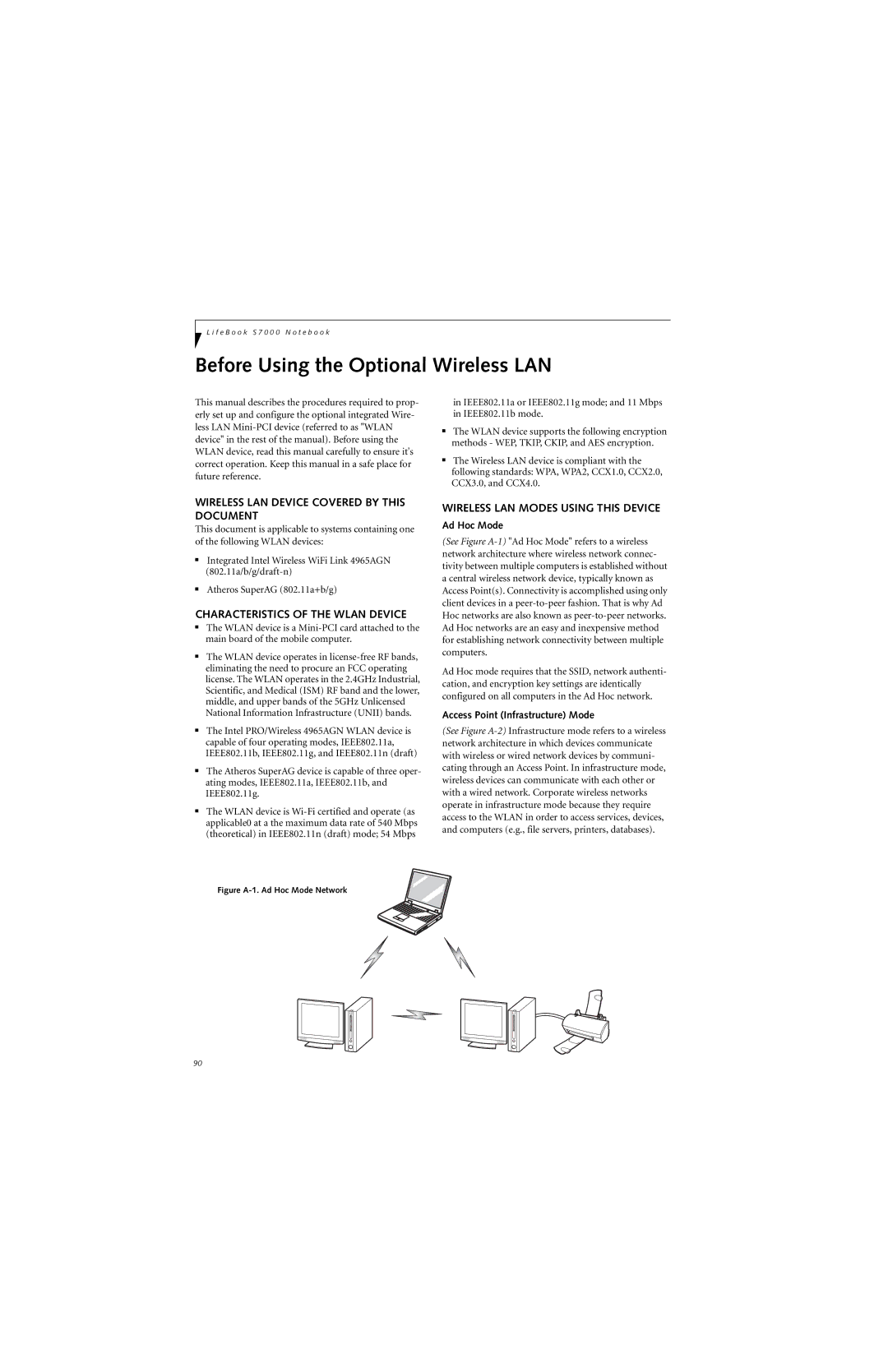
L i f e B o o k S 7 0 0 0 N o t e b o o k
Before Using the Optional Wireless LAN
This manual describes the procedures required to prop- erly set up and configure the optional integrated Wire- less LAN
in IEEE802.11a or IEEE802.11g mode; and 11 Mbps in IEEE802.11b mode.
■The WLAN device supports the following encryption methods - WEP, TKIP, CKIP, and AES encryption.
■The Wireless LAN device is compliant with the following standards: WPA, WPA2, CCX1.0, CCX2.0, CCX3.0, and CCX4.0.
WIRELESS LAN DEVICE COVERED BY THIS DOCUMENT
This document is applicable to systems containing one of the following WLAN devices:
■Integrated Intel Wireless WiFi Link 4965AGN
■Atheros SuperAG (802.11a+b/g)
CHARACTERISTICS OF THE WLAN DEVICE
■The WLAN device is a
■The WLAN device operates in
■The Intel PRO/Wireless 4965AGN WLAN device is capable of four operating modes, IEEE802.11a, IEEE802.11b, IEEE802.11g, and IEEE802.11n (draft)
■The Atheros SuperAG device is capable of three oper- ating modes, IEEE802.11a, IEEE802.11b, and IEEE802.11g.
■The WLAN device is
WIRELESS LAN MODES USING THIS DEVICE
Ad Hoc Mode
(See Figure
Ad Hoc mode requires that the SSID, network authenti- cation, and encryption key settings are identically configured on all computers in the Ad Hoc network.
Access Point (Infrastructure) Mode
(See Figure
Figure A-1. Ad Hoc Mode Network
90
